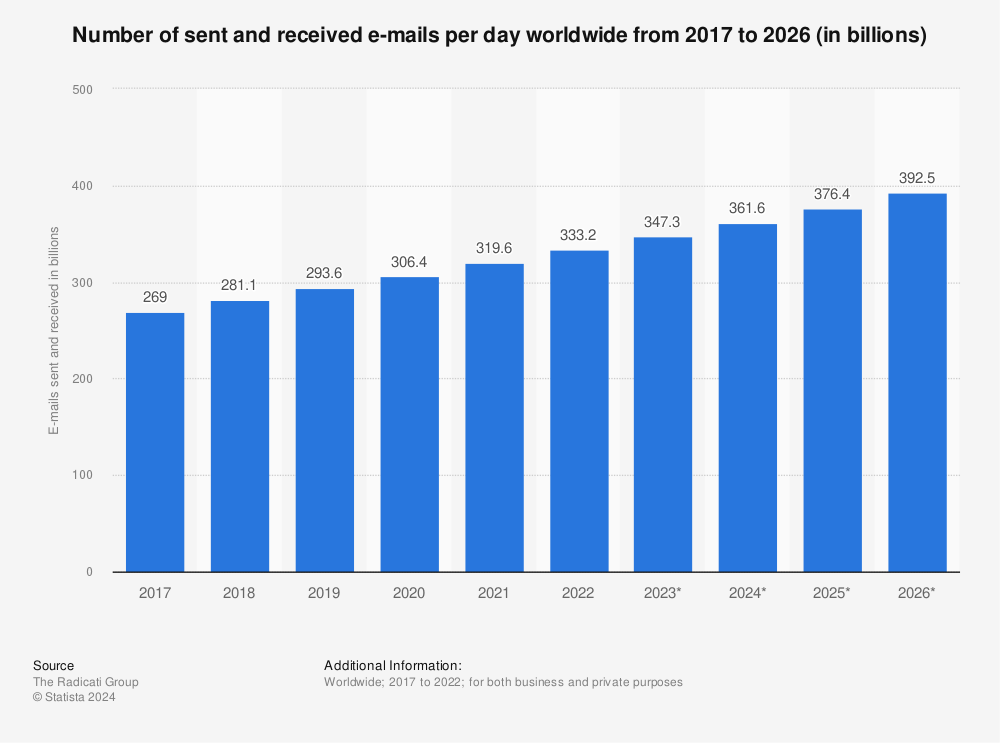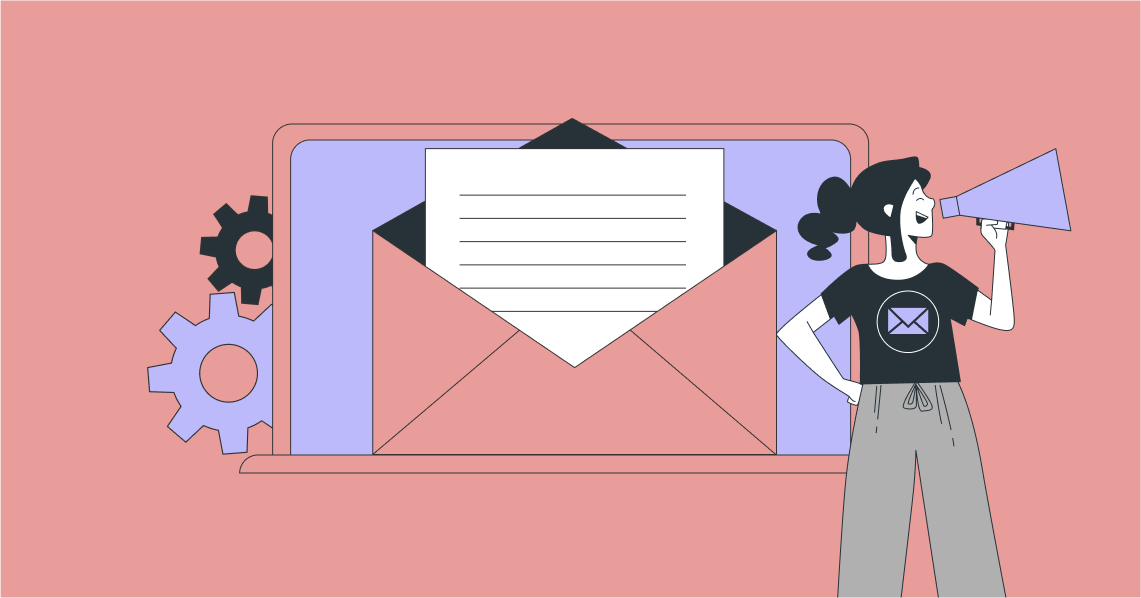Advertising disclosure:
Our partners compensate us. This may influence which products or services we review (also where and how those products appear on the site), this in no way affects our recommendations or the advice we offer. Our reviews are based on years of experience and countless hours of research. Our partners cannot pay us to guarantee favorable reviews of their products or services.
Email marketing is the granddaddy of internet marketing. It’s grown from strength to strength since the eighties and doesn’t seem to be slowing down. According to research by Statista shows that around 281 billion emails were sent in 2018. While that number seems unfathomable, it’s said to increase to over 392 billion in 2026.
Today, more people read emails on the go. In fact, a study by Marketing Sherpa shows that 72% of people prefer email communication over all other channels. This makes it a very convenient content marketing tool for smart businesses.

Source: marketingsherpa.com
But just how easy is it use for business marketing?
If you’re a business owner trying to figure out how to get started with this marketing method, it can appear to be a little complex. You may also have a host of questions about how it all works, one of which could be whether you should really bother with it.
In this blog post, we’ll give you a closer look at what email marketing is. We’ll go beyond just a definition. You’ll get a look at what you need to launch your very first campaign. We’ll share examples and ideas for inspiration, and recommendations on tools you can use.
But first, here’s that definition we promised:
Email marketing is the process of creating and sending marketing offers to prospects to accelerate the sales process.
Let’s take a close look at that definition.
Email marketing is like all marketing. The goal is to generate ROI for your marketing spend. And ROI on email marketing is pretty impressive. Brands have generated as much $38 for every $1 spent.
What’s most appealing about using email, is that it’s relatively cheap in comparison to other marketing methods. It’s also easy to track.
How is email used to accelerate the sales process?
Think about the last email sales offer you received from an online store you last visited or free newsletter sign-up for. Were you offered a free discount coupon? That was a way to get you to purchase something. The offer was to accelerate the sales process.
But what if your business sells complex machinery or software? You can’t exactly offer a 10% off coupon. What do you do?
Good question.
Email marketing can be used in different ways. In the case of a more complex sales process, your goal is to nurture subscribers until they are ready to take the next step (think product demos or have a conversation with sales).
This means that email marketing is used in three ways:
- To build awareness for your brand or product
- To nurture leads that later become paying customers
- To convert leads into paying customers
What is Email Marketing and How Can Your Business Start Using it?:
How to Create Your First Email Marketing Campaign
Getting started with email marketing isn’t as complex as you might imagine. Sure, there’s some thinking to be done (and a little learning) but it’s all possible.

1. Set Your Goal
Before you start thinking about the promotional offer you’d like to send, take a step back. You’ve got to create a strategy. And while this may not seem like fun at all, it’s the smartest way to ensure that you develop a strong email marketing campaign that you can learn from to generate even better results in future.
The best approach is to start with your business goals.
Do you have a large sales quota that needs to be met this quarter? Are you behind in sales for the month? Do you need more leads? Have you just launched a new product and need to promote it?
Focusing on a business goal makes your email marketing more aligned with real business objectives. For example, if you’re behind on your monthly quota, you know how much revenue you must generate. This is a very clear goal.
2. Determine Your Metrics
Once you’ve determined what your goal is, you need to quantify it. Knowing which metrics you should track helps achieve this. As mentioned earlier, you can track the success of an email marketing campaign.
Continuing with our sales quote goal example, let’s say you sell electronic appliances. You also have a list of customers who’ve purchased other household appliances from your store in the last 12 months. To help you achieve your sales quota, you need to sell more appliances.
You could create an email campaign with an offer to meet your quote. To track the success of your campaign, here is a list of metrics you could consider:
- Email open rate: how many people receive and open the email offer
- Click-through rate: how many people click on the link to buy an appliance
- Total appliances sold: total sales made to email recipients
3. Pick Your Offer
Your offer is a carrot to lure email subscribers to take the next step. Depending on what your goal is and how you plan to use email marketing to achieve it (build awareness, nurture leads, make sales), you’ll always need to create an irresistible offer for your audience.
Here’s how you can create an irresistible offer for each email marketing goal.
To Build Awareness:
Building awareness is about education. It’s about helping your audience better define problems they have that your brand can help solve. It’s also about educating them on the solutions available before you can sell to them.
When you use email marketing to build awareness, your offer is valuable information.
In the example below from Hubspot, they share useful information with a subscriber. Hubspot is a marketing automation solution and email is a big part of their service offering.
They also understand that people looking for marketing automation software won’t buy it if they don’t know how to send optimized marketing emails. The solution? They’ve created this email to make the reader aware of how to do just that.
To Nurture Leads:
Lead nurturing involves guiding leads along a path to the sale. In fact, an often-quoted statistic that many are becoming increasingly aware of in their businesses is that fewer buyers are actually ready to buy immediately. The stat says that only 3% of your market is actively buying, 56% are not ready, and 40% are almost ready.
This is why lead nurturing via email marketing is so crucial.
Lead nurture includes the creation of a series of emails that are sent over time. In the example below from Framebridge, they offer a tutorial on how to hang art.
As an online retailer of custom picture frames and art framing, this is the perfect solution for any subscriber. If a subscriber wants to hang a great piece of art but never purchase a custom frame because they didn’t know how to hang a one, this email is filled with the best information to motivate a sale down the line.
To Makes Sales:
Going in for the sale with email marketing requires a bit of tact. As with building awareness and nurturing, you’ve got to have a strong offer. In the example below, Uber makes a strong offer.
They promote the option of locking-in a flat rate for places you most often go (think work and home). But the offer doesn’t stop there. They also promise to cut you in on discounts for other rides.
Now that you have an idea of how to pick your goal, determine which metrics to track, and understand how to position your offer, it’s time to look at email marketing software.
What is Email Marketing Software?
It’s the lifeblood behind all great email campaigns. It helps brands reach subscribers and also track important metrics to show how campaigns perform.
Email marketing software also comes with a host of useful features. For example, today, you most email marketing software allows you to create landing pages with sign-up forms to help you collect more email subscribers and leads.
Other common features include:
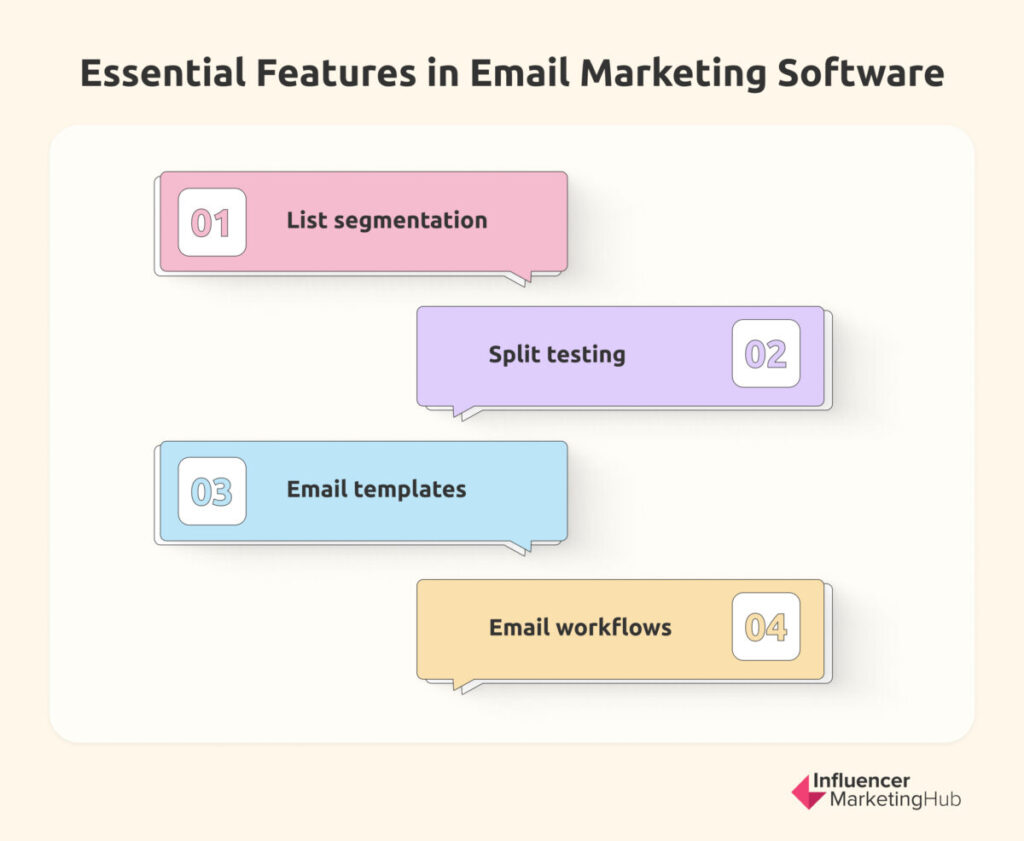
- List segmentation. You can build customer segments depending on your subscribers’ interests
- Split testing. Split a segment and test two email campaigns to see which converts higher
- Email templates. A collection of pre-built email formats that you can use
- Email workflows. Send specific emails depending on how your subscribers interact with previous emails you’ve sent
Do you need email software? Yes.
Apart from access to the features above, using it streamlines your marketing process. You’ll be able to do more to move your business forward in less time.
How Much Does Email Marketing Software Cost?
Prices range from $0/mo upward. Email marketing software providers often base their pricing models on the number of subscribers you’ll email and the set of features available with each plan.
If you’re looking for great providers, here are three worth looking into:
1. Mailchimp
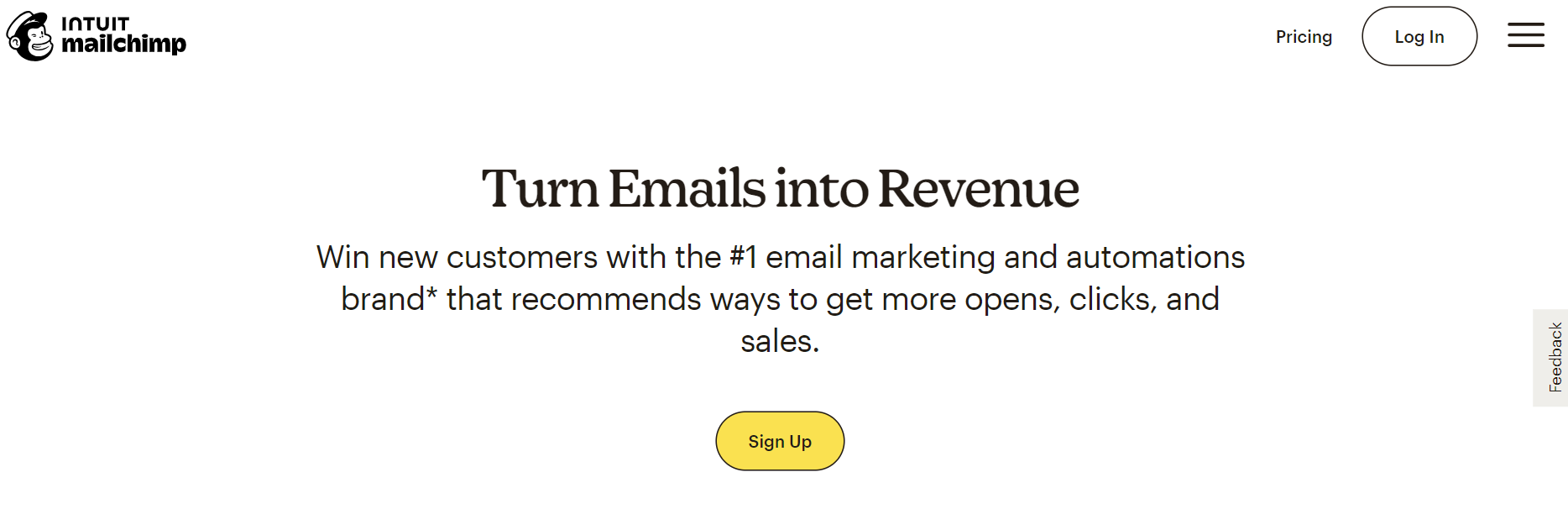
2. Convertkit
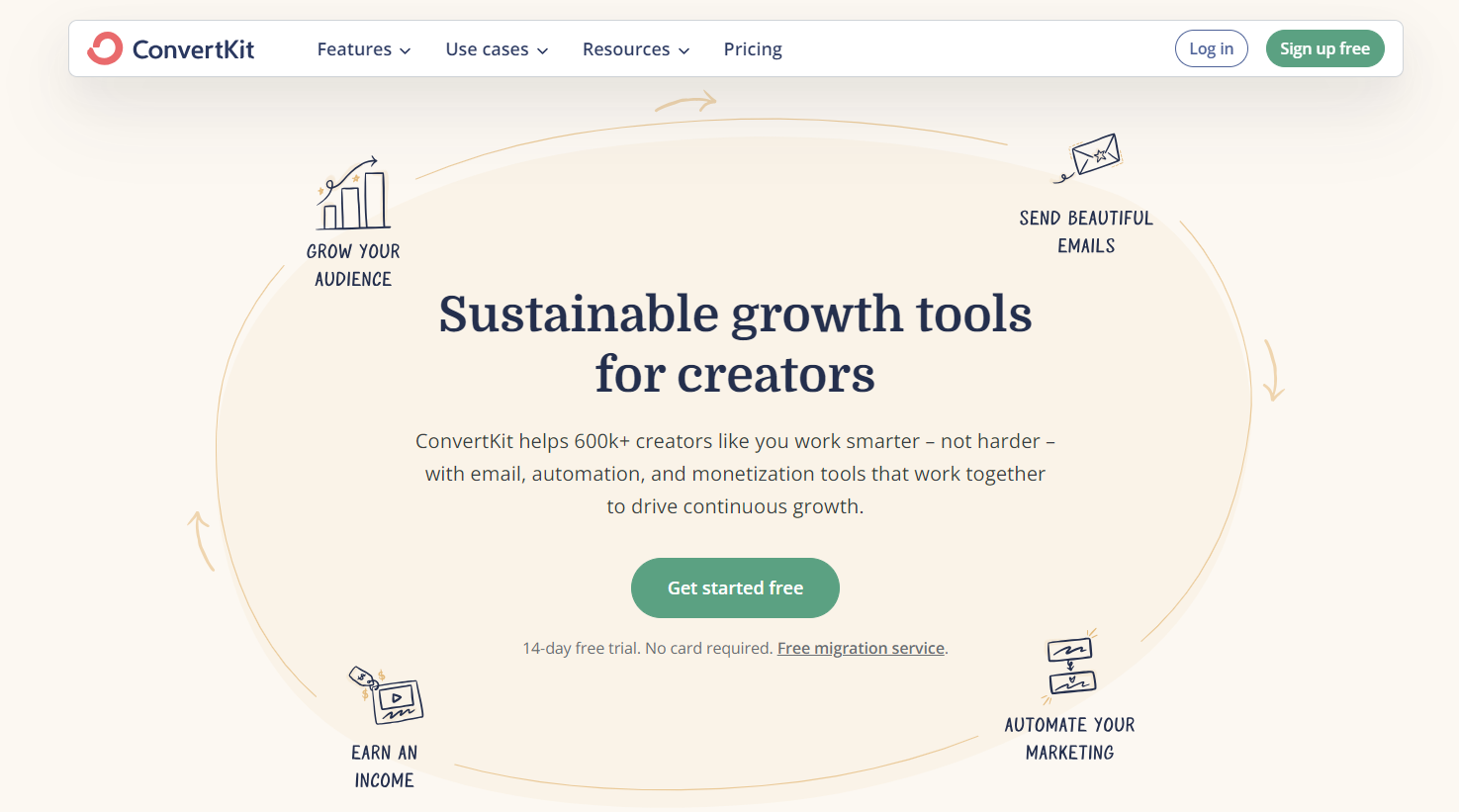
3. Constant Contact
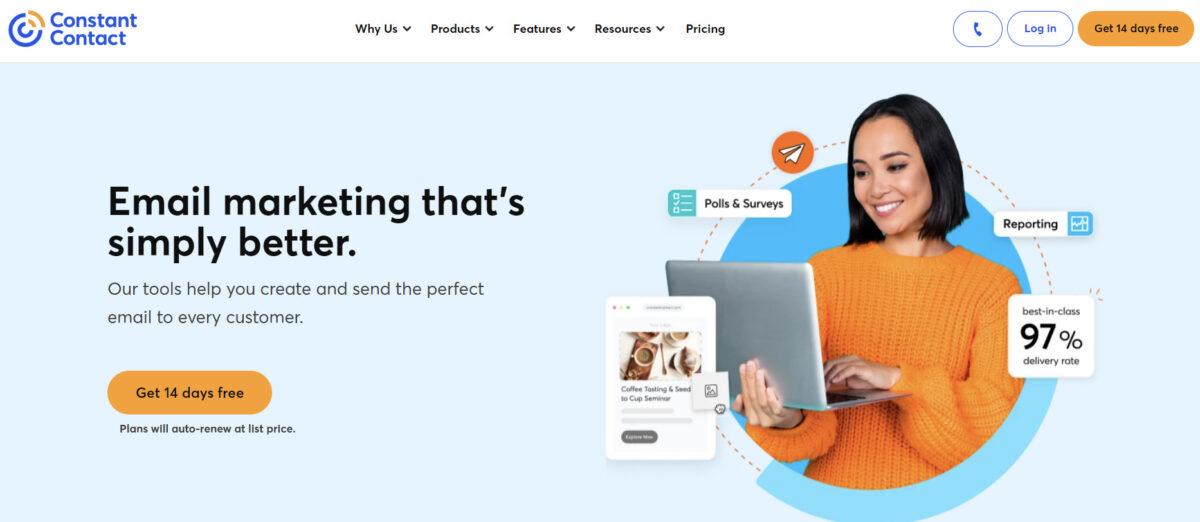
How to Structure Your Email
There are two parts to putting together a compelling email marketing offer. The first is a strong offer. The second is the creative content.
Creative content includes:
- Email design: the colours, graphics and structure of the email
- Email copy: the words you use to persuade readers to take action
Design Tips
When designing your email, here are X tips to bear in mind:

Make it Responsive
More people read email on their phones today. Design yours to render on mobile devices, making easier for more people to take action immediately.
Include Your Logo
People often look for ways to identify whether an email has come from a reputable source. Including your logo helps them identify your brand, especially if you will send more emails in future.
Use the Right Balance of Colour for Emphasis
Colour is a powerful tool, especially when used to inspire action. Depending on your offer, always refer to colour psychology as a guide for how your email will influence readers
Limit the Number Fonts
While there are hundreds of fonts, try and stick to commonly used options. Email applications are capable of recognizing most but often struggle with a few. The outcome can lead to eligible text and a lost opportunity to engage a lead.
Compress Your Images
Large emails can get caught in spam and can also a little longer to download. Compress yours to ensure your emails get delivered.
Copywriting Tips
Your messaging will do more heavy lifting than your email design. Here’s a set of tips you can use to engage your readers:

Know Your Audience
Develop an understanding of what your audience is interested in. Knowing who they are, what challenges they are trying to solve and what their aspirations are will go a long way. You can take these insights and apply them to your copy to make for strong and compelling messaging.
Use an Attention-Grabbing Subject line
All emails are always scrutinised by subscribers. It’s how people determine whether an email is worth their time. When you craft your headline, focus on creating one that:
- Helps the reader see themselves in a better-off position
- Piques interest
- Inspires action (creates urgency)
Identify a Challenge
Depending on your email goal, identifying the right challenge or problem will help you immediately capture the attention of your reader.
Sell on Emotion and Justify With Logic
The first rule you learn as a copywriter is that people love buying and hate being sold to. The second is that people buy for emotional reasons and justify their purchases with logic.
As you craft your email, bare this in mind: understanding your reader also means understanding the emotions that drive them to act. If you know what those are, you’ll be able to create compelling messaging.
Be Personable, but Stay On-Brand
Emailing a large group of people shouldn’t prevent your message from feeling personalised. Your readers are people after all, even if you are selling a B2B solution. So, make your emails sound more human, but still on-brand.
Use a Strong Call to Action
Once you’ve made a case for your offer, it’s time to get your reader to take action. Your call to action should be clear and action-oriented.
Summary
Email marketing is a powerful tool. It’s used by marketers the world over to generate impressive results, and you can, too. To create effective email marketing campaigns, you’ll need to establish your goals, understand which metrics to track, and how to put together a valuable offer for your readers.
You’ll also need to email marketing software. It will help you create, manage and send attractive emails filled with well-thought-out design elements and persuasive copy.
Frequently Asked Questions
What is email marketing and example?
Email marketing is a type of marketing that involves using email communication with your customers. Email newsletters and email blasts will inform customers about new products, new services, discounts, updates to your business, and more. Email marketing can help educate your audience, inform your audience, and keep them engaged.
What are the 3 types of email marketing?
There are three important types of email marketing:
- Email newsletters
- Transactional emails
- Behavioral emails
What is email marketing strategy?
An excellent email marketing strategy will help a company identify and follow marketing goals through emails. This strategy gives businesses a way to channel communication with prospective clients and customers.
What is email marketing and why is it important?
Email marketing refers to email communications in a marketing strategy to reach business goals. Email marketing can help generate sales, enhance customer engagement, draw in new customers, build brand awareness, and reward customer loyalty through discounts.
